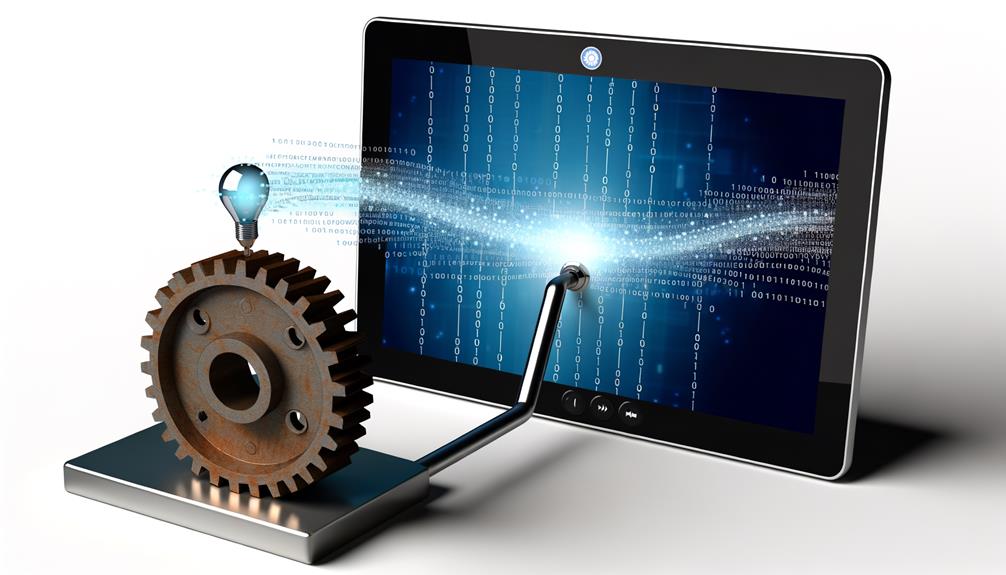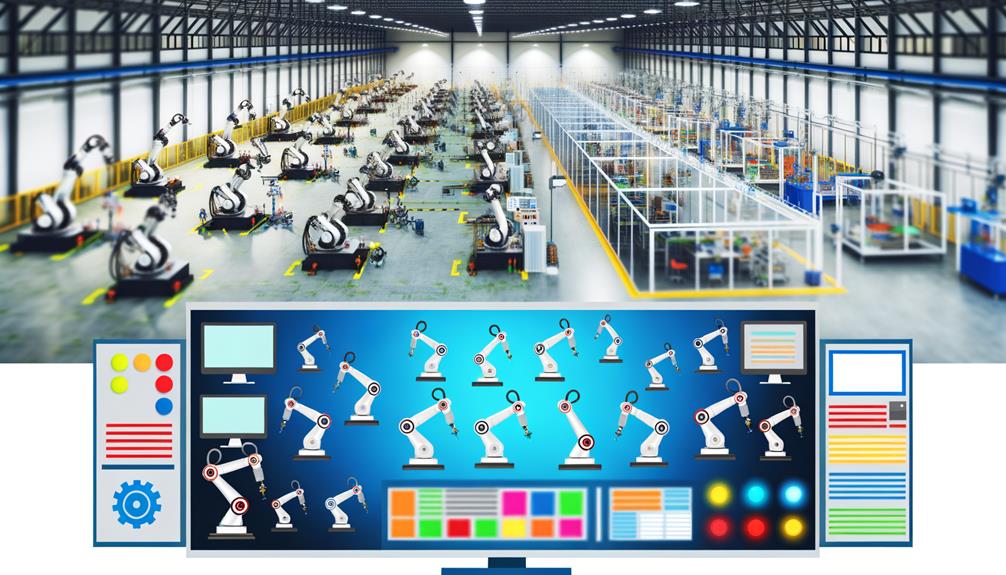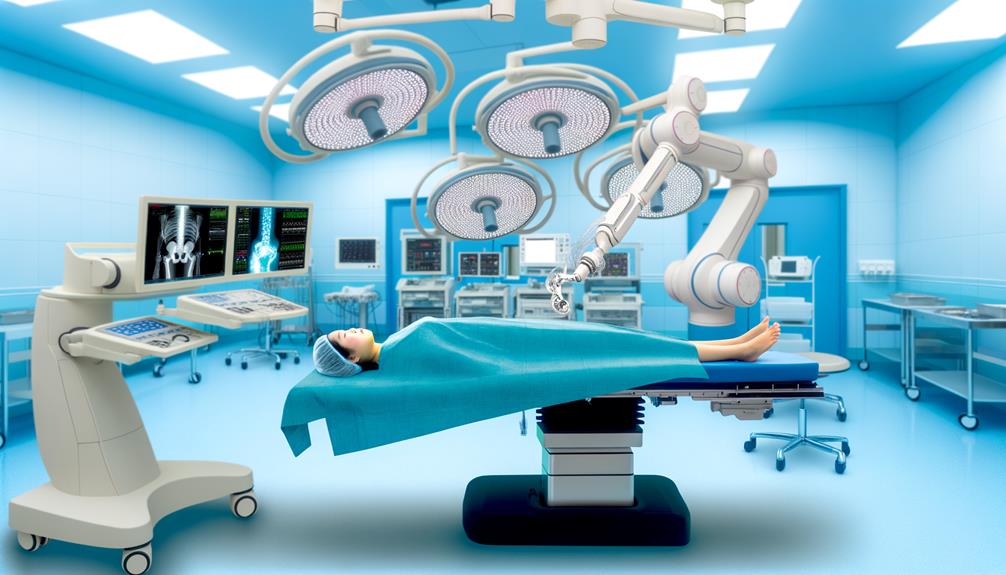The concept of Cyber-Physical Systems (CPS) is reshaping the boundaries between the digital realm and physical world, challenging conventional notions of separation.
This integration reveals the intricate interplay between bits and atoms that underpins our modern existence. However, beneath this seamless fusion, a network of vulnerabilities awaits discovery.
Are you ready to uncover hidden truths and navigate the uncharted territories where technology and physicality intersect?
Definition of Cyber-Physical Systems

In the realm of technology, Cyber-Physical Systems (CPS) represent a sophisticated integration of digital intelligence with physical processes, reshaping our interactions with the environment. CPS applications are diverse, spanning sectors such as smart cities, manufacturing, and healthcare, offering unparalleled efficiency and connectivity.
However, this interconnectedness raises significant concerns, particularly regarding the security of these integrated systems. While the allure of seamless integration in CPS applications is undeniable, the overshadowing reality is the looming security risks. The core of CPS lies in the fusion of cyber and physical domains, creating vulnerabilities that malicious actors are eager to exploit. Whether it’s smart grids managing energy distribution or autonomous vehicles navigating roads, the risks are substantial.
Securing these interconnected systems isn’t optional; it’s an essential mandate in an era of rapid digital progress. As we embrace the potential of CPS applications, it’s crucial to recognize that securing these systems isn’t an afterthought but a foundational necessity for a safer and more efficient future.
Components of CPS
Misconceptions about the simplicity of CPS components can lead to misunderstandings. The key elements are intricate, with nuanced interactions that are crucial for system functionality.
Integrating technologies isn’t a straightforward plug-and-play scenario; hidden complexities often emerge when different systems are required to communicate.
Designing interconnected systems necessitates a thorough examination of every connection point, as a single weak link has the potential to compromise the entire CPS network.
Key CPS Elements
Within the intricate web of Cyber-Physical Systems (CPS), foundational components play a crucial role in shaping the functionality and interconnected nature of this technology. The essence of CPS is encapsulated in three key elements:
- Sensors: These omnipresent devices function as the sensory organs of CPS, capturing real-time data from the physical environment and transferring it into the digital realm.
- Actuators: Serving as the operational force of CPS, actuators convert digital instructions into physical movements, allowing the system to engage with its surroundings and enact changes.
- Communication Networks: Acting as the central nervous system of CPS, communication networks facilitate the seamless flow of information between digital and physical entities, ensuring efficient operation and coordination.
Integration of Technologies
Peeling back the curtain on the intricate web of Cyber-Physical Systems (CPS involves delving into the amalgamation of technologies that form the backbone of this interconnected domain.
The integration of technologies within CPS is a complex process where every component must seamlessly sync with the others to ensure peak performance. Sensors play a crucial role in capturing real-world data, while actuators translate digital commands into physical actions.
This interplay of hardware, software, and communication protocols requires meticulous attention to detail to mitigate potential vulnerabilities that could be exploited by malicious actors, potentially leading to catastrophic consequences.
Interconnected System Design
Peeling back the facade of Cyber-Physical Systems reveals a network intricately woven with the components of interconnected system design, each element serving an important function in the seamless operation of CPS.
- Sensor Networks: Serving as the nerve endings of CPS, these networks collect data from the physical world and transmit it for processing.
- Actuators: Acting as the muscles of the system, these components execute commands based on the processed data to effect changes in the physical environment.
- Communication Protocols: Functioning as the language of CPS, these protocols ensure seamless interaction between digital and physical components, enabling real-time responses.
Applications in Smart Cities
Smart cities are thriving with innovative cyber-physical systems (CPS) applications that are transforming urban environments worldwide. These systems are revolutionizing various aspects of city operations, including transportation, energy management, public safety, and waste disposal. However, amidst the drive for increased efficiency and convenience, there are underlying concerns that need attention.
The rush to enhance urban intelligence is leading to compromises in privacy and security within smart cities. CPS applications often gather extensive personal data without explicit consent, raising significant issues regarding surveillance and potential data misuse. The interconnected nature of these systems also exposes cities to heightened risks of cyber attacks, jeopardizing critical infrastructure.
While the advantages of smart city technologies are evident, it’s crucial to address the ethical dilemmas and security vulnerabilities they introduce. As we enter the era of CPS in urban settings, it’s imperative not to disregard the possible repercussions of prioritizing technological advancement over privacy and security.
Implementation in Manufacturing

Are you fully leveraging the potential of Cyber Physical Systems (CPS) in manufacturing, beyond Smart Factories, Automation, and Quality Control Systems?
Integrating CPS into manufacturing processes goes far beyond just Automation and Robotics. Are you prepared to transform your operations and harness the complete power of CPS in your factory?
Smart Factories in CPS
Smart Factories integrated into Cyber Physical Systems (CPS) are transforming traditional manufacturing processes. Discover how this evolution is reshaping the manufacturing industry:
- Enhanced Efficiency: Smart Factories utilize real-time data and automation to streamline operations, boosting productivity and reducing downtime.
- Data-Driven Decision Making: By gathering and analyzing extensive data from interconnected devices, Smart Factories empower informed decision-making to optimize processes and allocate resources effectively.
- Improved Quality Control: Through sensor integration and AI utilization, Smart Factories uphold strict quality standards by identifying defects early in the production cycle, ensuring superior output quality.
Experience the evolution of manufacturing into a highly efficient and technology-driven sector!
Automation and Robotics
The integration of automation and robotics into manufacturing processes has ignited discussions on the impact on workforce displacement and the ethical considerations of relying on AI-driven systems for operational efficiency. Advocates highlight the potential for increased productivity and cost-effectiveness, while critics express concerns about job displacement and the dehumanization of work environments. Here is an overview of the key aspects:
| Pros | Cons |
|---|---|
| Enhanced Efficiency | Job Displacement |
| Reduced Errors | Ethical Concerns |
| Increased Output | Skills Redundancy |
| Cost Savings | Dependence on Technology |
| Improved Safety | Potential for Malfunction |
As automation and robotics progress, striking a balance between technological advancements and ethical implications poses a significant challenge for the manufacturing sector.
Quality Control Systems
Quality control systems in manufacturing play a critical role, serving as a defense against defects while also posing a potential vulnerability in the pursuit of operational excellence.
- Overreliance on Automation: Automated quality control processes can enhance efficiency but may inadvertently overlook subtle defects detectable through manual inspection.
- Data Privacy Concerns: The accumulation and protection of extensive quality control data raise concerns regarding access to this sensitive information and its ethical utilization.
- Impact on Human Workforce: Stringent quality control systems can impose heightened pressure on employees to meet demanding standards, potentially leading to burnout and diminished morale.
Utilization in Healthcare

The integration of cyber-physical systems in healthcare presents a transformative potential that challenges conventional practices and enhances patient care and operational efficiency. Real-time monitoring of patient vital signs, automated medication delivery systems, and predictive analytics redefine the standard of care in healthcare settings leveraging CPS.
However, alongside the promises of efficiency and improved outcomes, concerns arise due to the interconnected nature of these systems, which could lead to vulnerabilities to cyber attacks, compromising patient data privacy and the integrity of medical devices. As we observe the seamless coordination between digital technologies and physical processes in healthcare, it’s essential to address the ethical implications of data usage and the critical need for robust cybersecurity measures.
Embracing CPS in healthcare offers innovation while necessitating a vigilant approach to mitigating potential risks.
Challenges in Securing CPS
Securing Cyber Physical Systems presents a significant challenge in today’s interconnected digital landscape, where vulnerabilities can lead to widespread consequences.
- Interconnectedness: The interconnected nature of Cyber Physical Systems creates numerous potential entry points for malicious actors, making it challenging to adequately secure every endpoint.
- Legacy Systems: Many components of CPS are integrated into legacy systems that weren’t originally designed to combat modern cybersecurity threats, leaving them susceptible to cyber attacks.
- Human Factor: Human error and insider threats continue to pose significant challenges in the security of CPS, as individuals with system access can inadvertently compromise its integrity.
Addressing these challenges necessitates a comprehensive approach that combines technological advancements with robust cybersecurity protocols to ensure the protection and functionality of Cyber Physical Systems in today’s digital environment.
Strategies for Cybersecurity

Robust cybersecurity strategies are essential for safeguarding Cyber Physical Systems (CPS) against evolving threats in today’s digital landscape. The interconnected nature of CPS exposes them to potential cyber attacks with catastrophic consequences. To address these risks, a multi-faceted approach is necessary, including continuous monitoring, regular updates, and robust encryption protocols.
Unfortunately, many organizations overlook cybersecurity, considering it an afterthought rather than a crucial element of CPS development. This oversight creates opportunities for malicious actors to exploit vulnerabilities and disrupt essential systems.
As a whistleblower in CPS cybersecurity, it’s crucial to raise awareness about these risks and advocate for stringent security measures. Inadequate cybersecurity not only compromises the integrity of CPS but also poses significant threats to public safety and national security. By highlighting these critical issues and promoting proactive cybersecurity strategies, the future of interconnected digital and physical systems can be better protected.
Future Trends in CPS
Embracing emerging technologies is crucial for staying ahead in the rapidly evolving landscape of Cyber Physical Systems (CPS). As we delve into the future trends in CPS, it’s essential to consider potential disruptions and advancements that could shape the industry.
Here are three controversial insights to consider:
- AI Dominance: Artificial Intelligence (AI) is set to revolutionize CPS with its predictive capabilities and automation. However, the ethical implications of AI decision-making in critical systems raise concerns about accountability and transparency.
- Edge Computing Revolution: The transition towards decentralized data processing at the network edge provides lower latency and reduced bandwidth usage. Nonetheless, the security vulnerabilities associated with edge devices challenge traditional centralized security models.
- Quantum Computing Impact: The emergence of quantum computing poses a threat to current cryptography standards, leading to a race to develop quantum-resistant algorithms for securing CPS. The potential for quantum supremacy may disrupt existing CPS architectures, necessitating proactive adaptation strategies.
Frequently Asked Questions
How Do Cyber-Physical Systems Impact the Environment and Sustainability Efforts in Various Industries?
Cyber-physical systems have the potential to transform sustainability efforts across various industries by optimizing resource utilization, minimizing waste, and improving energy efficiency. However, they also introduce environmental challenges such as the accumulation of e-waste and concerns regarding energy consumption. These systems play a crucial role in enhancing the environmental performance of industries while also necessitating careful management to mitigate their negative impacts on the environment.
What Role Do Regulations and Standards Play in the Development and Deployment of Cyber-Physical Systems?
Regulations and standards play a crucial role in the development and deployment of cyber-physical systems. They serve as the foundation that ensures safety, reliability, and interoperability in these systems. By adhering to these guidelines, organizations can effectively mitigate risks, safeguard data, and improve the overall performance of CPS solutions.
How Do Advancements in Artificial Intelligence and Machine Learning Influence the Capabilities of Cyber-Physical Systems?
Advancements in AI and machine learning significantly enhance the capabilities of Cyber-Physical Systems (CPS), improving decision-making processes and increasing automation levels. However, there are potential risks associated with these advancements, such as the impact of biases in algorithms on the performance of the system. It is crucial to remain vigilant, carefully consider the implications, and demand transparency in the development processes of AI and machine learning technologies within CPS.
What Are the Ethical Considerations Surrounding the Use of Cyber-Physical Systems in Critical Infrastructure and Public Services?
Consider the ethical implications when utilizing cyber-physical systems in critical infrastructure and public services. Safeguard privacy, prevent misuse, and ensure transparency. Vigilance is crucial to protect against potential risks and maintain the integrity of these systems.
How Are Cyber-Physical Systems Transforming Traditional Business Models and Creating New Opportunities for Innovation and Growth?
Cyber-physical systems are driving a transformative revolution in traditional business models, paving the way for innovative opportunities and exponential growth. Embracing these systems is crucial to stay ahead in the ever-evolving landscape of technology and business. They are reshaping established frameworks, igniting fresh concepts, and propelling businesses towards unprecedented success. Don’t miss out on this game-changing shift; leverage cyber-physical systems to thrive in the era of digital transformation.
Conclusion
Navigating the intricate web of cyber-physical systems reveals a world where the digital and physical domains seamlessly intertwine. The fusion of technology and physical processes creates a dynamic landscape full of endless possibilities.
Like a symphony conductor orchestrating a harmonious blend of instruments, CPS harmonizes the digital and physical worlds to revolutionize society. Embracing the transformative power of CPS is key to unlocking a future where innovation knows no bounds.
